Choose Lessons sorted by Topic or sorted by Science Standard.
[efstabs class=”yourcustomclass”]
[efstab title=”Sorted by Topic” active=”active”]
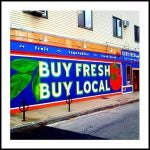 |
Buying Local – Students will research the buying local movement. |
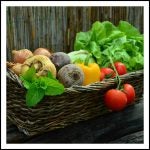 |
Edible Plant Parts – Students will investigate how plant form relates to structure through observation and dissection of an assortment of plants and vegetables. They will learn to locate and label the parts humans use for food (i.e. seeds, stem, leaf, fruit, root, flower). Students will be able to classify plant foods as fruit, vegetable, tuber, or roots. |
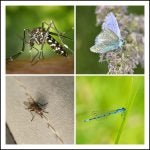 |
Garden Wildlife – Students will explore insect mouthparts and food sources through a form and function lab activity. They will infer how insects affect gardens by discussing the benefits and harms of garden “friends and foes”. Students will learn how to identify such critters in a garden then apply these skills in the garden. |
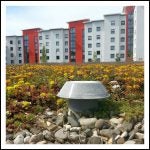 |
Green Roofs – Students will hypothesize and test an experiment simulating the effects of green roofs. |
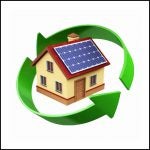 |
Energy Efficiency – Insulation – Students will practice identifying areas of energy waste in the buildings on Marshall’s campus through measuring localized temperatures with a heat gun and detecting drafts with a hand-crafted flag device. Students will analyze how this costs energy and develop plans to eliminate the energy waste. |
 |
Energy Efficiency – Light & Energy – Students will learn the basics of Energy and Electricity, and then compare and contrast the efficiency of light bulbs through experimentation of incandescent, fluorescent, and LED light. They will understand the differences and transfer of energy. Students will connect energy use at home to energy use nationwide and worldwide. |
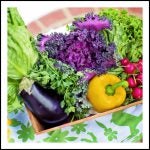 |
Nutrition & Nutrients – Students will realize the connection between essential plant nutrients and essential nutrients for humans through a “hamburger dissection”. They will measure soil and plant health through observation and soil nutrient testing. |
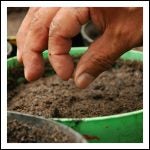 |
Plants Seeds & Needs – Students will actively investigate seed dispersal through searching for seeds on campus and examining the seed forms. They will hypothesize the modes of transportation for such seeds and what seeds require for growth. Students will learn what plants need to be healthy and how to measure such needs. |
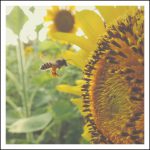 |
Pollination – Students will investigate pollination frequencies through a scientific experiment. They will draw conclusions from their data and make inferences relating their data to pollinator activities as a whole. |
 |
Sustainable Community – Students will understand the significance of conductors and insulators and how they relate to energy. They will identify, describe, and use efficient and conservative measures for “building” a sustainable community. They will also discover how energy efficient options are the most cost-effective choices in the long run. |
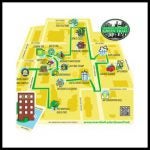 |
Sustainability Scavenger Hunt – Students will identify sustainable practices on Marshall’s campus through a scavenger hunt. They will experience how sustainability can be applied in a community then dream of how it can be practiced elsewhere during discussions. |
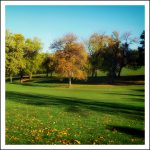 |
Tree Scavenger Hunt – Students will identify trees using tree identification guides during a tree scavenger hunt. They will discover the biodiversity of trees on Marshall’s campus throughout their search then learn about the significance of biodiversity through class discussions. |
[/efstab] [efstab title=”Sorted by Science Standard”]
Next Generation Science Standards
- K-ESS3-3 – Communicate solutions that will reduce the impact of humans on the land, water, air, and/or other living things in the local environment.
- MS-ESS2-4 – Develop a model to describe the cycling of water through Earth’s systems driven by energy from the sun and the force of gravity
- HS-ESS3-4 – Evaluate or refine a technological solution that reduces impacts of human activities on natural systems.
- HS-ETS1-1 – Analyze a major global challenge to specify qualitative and quantitative criteria and constraints for solutions that account for societal needs and wants.
- HS-ETS1-2 – Design a solution to a complex real-world problem by breaking it down into smaller, more manageable problems that can be solved through engineering.
- HS-ETS1-2 – Design a solution to a complex real-world problem by breaking it down into smaller, more manageable problems that can be solved through engineering.
- HS-LS2-2 – Use mathematical representations to support and revise explanations based on evidence about factors affecting biodiversity and populations in ecosystems of different scales.
- HS-LS2-7 – Design, evaluate, and refine a solution for reducing the impacts of human activities on the environment and biodiversity.
- HS-LS2-8 – Evaluate the evidence for the role of group behavior on individual and species’ chances to survive and reproduce.
- HS-PS3-1– Create a computational model to calculate the change in the energy of one component in a system when the change in energy of the other component(s) and energy flows in and out of the system are known.
- HS-PS3-3 – Design, build, and refine a device that works within given constraints to convert one form of energy into another form of energy.
- MS-ETS1-3 – Analyze data from tests to determine similarities and differences among several design solutions to identify the best characteristics of each that can be combined into a new solution to better meet the criteria for success.
- MS-ESS3-3 – Apply scientific principles to design a method for monitoring and minimizing a human impact on the environment.
- MS-ESS3-4 – Construct an argument supported by evidence for how increases in human population and per-capita consumption of natural resources impact Earth’s systems.
- MS-ETS1-3 – Analyze data from tests to determine similarities and differences among several design solutions to identify the best characteristics of each that can be combined into a new solution to better meet the criteria for success.
- MS-LS1-4 – Use argument based on empirical evidence and scientific reasoning to support an explanation for how characteristic animal behaviors and specialized plant structures affect the probability of successful reproduction of animals and plants respectively.
- MS-LS1-5 – Construct a scientific explanation based on evidence for how environmental and genetic factors influence the growth of organisms.
- MS-LS1-6 – Construct a scientific explanation based on evidence for the role of photosynthesis in the cycling of matter and flow of energy into and out of organisms.
- MS-LS1-7 – Develop a model to describe how food is rearranged through chemical reactions forming new molecules that support growth and/or release energy as this matter moves through an organism.
- MS-LS2-1 – Analyze and interpret data to provide evidence for the effects of resource availability on organisms and populations of organisms in an ecosystem.
- MS-LS2-2 – Construct an explanation that predicts patterns of interactions among organisms across multiple ecosystems.
- MS-LS2-5 – Evaluate competing design solutions for maintaining biodiversity and ecosystem services.
- MS-PS1-4 – Develop a model that predicts and describes changes in particle motion, temperature, and state of a pure substance when thermal energy is added or removed.
- MS-PS1-6 – Undertake a design project to construct, test, and modify a device that either releases or absorbs thermal energy by chemical processes.
- MS-PS3-4 – Plan an investigation to determine the relationships among the energy transferred, the type of matter, the mass, and the change in the average kinetic energy of the particles as measured by the temperature of the sample.
21st Century Science Content Standards and Objectives for WV Schools
- O.B.2.4 – relate the structure and function of individual body systems to the overall functioning of the organism.
- O.ENV.2.1 – compare and contrast the rate elements cycle through the ecosphere, describing natural and human influences on reaction rates: Carbon, Nitrogen, Phosphorus, Oxygen, Sulfur.
- O.ENV.2.2 – explain how the chemical components of biological and physical processes fit in the overall process of biogeochemical cycling such as photosynthesis, respiration, nitrogen fixation, or decomposition.
- O.ENV.2.4 – evaluate environmental and economic advantages and disadvantages of using nonrenewable and renewable energy.
- O.ENV.2.5 – differentiate various means of generating electricity in terms of the transformation of energy among forms, the relationship of matter and energy, and efficiency/production of heat energy.
- O.ENV.2.10 – analyze biological diversity as it relates to the stability of an ecosystem.
- O.ENV.2.18 – identify sources, uses, quality, conservation, and global distribution of water.
- O.ENV.2.19 – create models to show surface and groundwater flows in a local drainage and explain how surface and groundwater are related
- O.ENV.2.24 – classify and analyze characteristics of different soil types: Texture, pH, Nitrogen, Phosphorus, Potassium.
- O.ES.2.28 – research alternative energy sources and evaluate the ecological, environmental and economic cost-benefit ratio.
- O.PS.1.2 – formulate scientific explanations based on historical observations and experimental evidence, accounting for variability in experimental results.
- O.PS.1.3 – conduct and/or design investigations that incorporate the skills and attitudes and/or values of scientific inquiry (e.g., established research protocol, accurate record keeping, replication of results and peer review, objectivity, openness, skepticism, fairness, or creativity and logic).
- O.PS.1.9 – synthesize concepts across various science disciplines to better understand the natural world (e.g., form and function, systems, or change over time).
- O.6.1.01 – realize that scientists formulate and test their explanations of nature using observation and experiments.
- O.6.1.05 – cooperate and collaborate to ask questions, design and conduct investigations to find answers and solve problems.
- O.6.1.08 – use a variety of technologies and scientific instruments to conduct explorations, investigations, and experiments of the natural world.
- O.6.1.10 – utilize experimentation to demonstrate scientific processes and thinking skills (e.g., formulating questions, predicting, forming hypotheses, quantifying, or identifying dependent and independent variables).
- O.6.1.11 – construct and use charts, graphs and tables to organize, display, interpret, analyze and explain data.
- O.6.2.03 – classify living organisms according to their structure and functions.
- O.6.2.05 – examine how abiotic and biotic factors affect the interdependence among organisms.
- O.6.2.08 – predict changes in populations of organisms due to limiting environmental factors (e.g., food supply, predators, disease, or habitat).
- O.6.3.01 – explore the relationship between the parts of a system to the whole system.
- O.7.2.07 – evaluate how the different adaptations and life cycles of plants and animals help them to survive in different niches and environments (e.g., inherited and acquired adaptations).
- O.7.2.08 – analyze how changes in the environment have led to reproductive adaptations through natural selection.
- O.7.2.10 – analyze the differences in the growth, development and reproduction in flowering and non-flowering plants.
- O.7.2.11 – predict the trends of interdependent populations if one of the limiting factors is changed.
- O.7.2.23 – explain conservation of matter and energy and investigate the different forms of energy (e.g., mechanical, potential, kinetic, or gravitational).
- O.8.2.06 – analyze how behaviors of organisms lead to species continuity (e.g., reproductive/mating behaviors, or seed dispersal).
- O.8.2.18 – examine the various sources of energy (e.g., fossil fuels, wind, solar, geothermal, nuclear, biomass).
- O.8.2.21 – relate the conservation of energy theory to energy transformations (e.g., electrical/heat, or mechanical/heat).